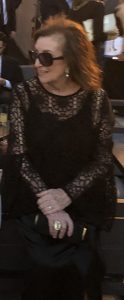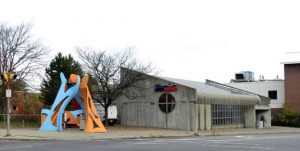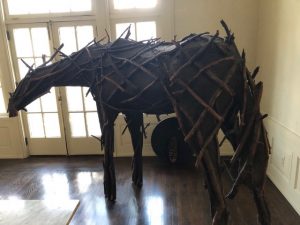My amazing sister-in-law, Nina Freudenheim, has died (10th April 2020) in Buffalo, at age 83. She had been ailing for several weeks and, aside from an apparent slew of other medical issues, she apparently also had Covid-19. She leaves her husband, my older brother, Robert (Bob), her three children Rachel, Julie (Spencer Feldman) and Leigh, four impressive grandchildren Eliza (Derek Fay), Drew, Ethan, and Will. That’s the standard obituary part. But it doesn’t begin to express why Nina was such a remarkable woman.

Although she had been a working woman (office, theatre, etc.), when Nina and my brother married in 1961, I think the expectation was that she would settle into the wife-and-mother role that characterized so many women of her generation. And she managed to slip into that role with apparent ease – nurturing her three impressive kids, making sure they attended the best schools and would turn into productive citizens. (They did!) And engaging in the requisite volunteer activities, especially related to cultural and social issues, in a Junior League kind of way (although the Junior League likely wouldn’t have invited her.) Meanwhile, I have a feeling that my brother didn’t do a lot of diaper changing, and he probably didn’t help out in the kitchen a whole lot – again taking on the expected roles for men of our generation.
And then it changed. Nina opened her eponymous gallery in 1975, and from its very beginnings Nina Freudenheim Gallery was a center for a variety of impressive artists to showcase their achievements. Nina worked from her gut and her instincts were amazingly on target. Although we were both functioning in “the art world” we rarely discussed her artists or her choices. Yet, like the astute gallerist she was, Nina introduced me to a number of significant artists about whom I previously knew nothing. Very little has been written about the challenges of running a small commercial gallery not-in-NYC – developing a clientele, making ends meet, retaining a sense of excitement about a constantly shifting series of artists and exhibitions for a relatively small audience. And having a significant impact on the range of art available for Buffalonians to view, despite its fine local art museum. I never quite understood the source of all the energy it took to personally schlepp art back and forth (from New York or wherever) without the staff underpinnings that larger galleries and museums rely on to make their work possible. But it was part of what drove her, because she clearly loved what she did, was committed to her artists (many of whom came to have major reputations after she first showed them), and never seemed to lose the psychic energy that it takes to keep that sort of venture going. And she was deeply devoted to Buffalo!
Perhaps Nina’s most directly visible art legacy is in her having overseen the art selection committee that commissioned the art that accompanied Buffalo’s then-new rapid transit stations (NFTA-Metro) in the early 1980’s. She skillfully managed what is always a highly contentious and political process, that resulted in public works by a wide range of artists such as Beverly Pepper, Stephen Antonakos, Charles Clough, Sam Gilliam, and George Sugarman.

And there is probably no way to track the advice she provided to countless collectors. The Castellani Art Museum of Niagara University honored her last fall with an exhibition: For the Love of Art: A Tribute to Gallerist Nina Freudenheim.
The “love” part is what matters most, because Nina embodied that in spades. Along with art, she loved cooking and entertaining, and managed to do both with incredible grace and seeming ease. Small dinner parties always included imaginative flower arrangements to accentuate stylish table settings. Larger receptions involved a generous array of wonderful foods. Some of these parties were for her family or for her artists, and others were for visiting dignitaries coming to the Albright-Knox Art Gallery just down the street. The unifying factor in all of her hostess activities was Nina’s personal warmth, making everything seem like it had been a cinch – overseen by the life-size Deborah Butterfield horse in the dining room!

Most of all, love included her being an incredibly caring daughter to her hard-working, long-time-single, mother who lived past her centennial birthday (which I always imagined Nina would, too). While my own parents may initially have felt skittish about my brother’s marrying Nina, they quickly learned to adore and admire her; and she repaid that with love and the special care that they required in their old age. Her kids and grandkids (and my own kids) surely saw that love in many ways as well. But no one received as much of it as my lucky brother. Nina appreciated his eccentricities, and if, as often happens with older couples, there was a co-dependency relationship, it was really a deeply-embedded love relationship. I observed that during my last visit to Buffalo in December. I could tell that both of them were ailing, although (much to my amazement) Nina was still spending her days in the gallery, installing an exhibition. But they were also complexly caring for — and terribly worried about — each other. I’m trying to come to terms with her loss. Which is why I’m writing – and sharing – these thoughts.